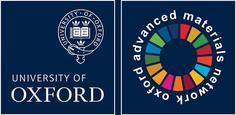Organic-based phosphors are promising alternatives to rare-earth metal based white light-emitting diodes (LEDs). Integrating phosphors into organic LED systems, however, is constrained by limited long-term chemical- and photo-stability, particularly for blue emitters, along with fabricability. Coumarins are common blue emitters for red-green-blue (RGB) or blue-yellow white light emission (WLE) systems but are susceptible to photodimerization and decay, both supressing fluorescence. This work employs a guest@host architecture to entrap 7-methoxycoumarin (MC) in metal-organic framework nanosheets (MONs) of the 2D phase of ZIF-7 (Z7-NS). This prevented photodimerization due to the arrangement of dye molecules within the nanosheet spacings. Favourably, upon ultraviolet exposure (365 nm), a new intense broader emission band forms irreversibly, derived from charge-transfer behaviour of the MC chromophores. This resulted in intense blue emission with 4.2 × improved photoluminescence quantum yield (PLQY) (Φ = 26.6 %) compared to molecular MC. Contrastingly, encapsulation of MC in 3D ZIF-7 (MC@Z7) also prevented photodimerization, but only exhibited purple-blue low-intensity, low PLQY MC monomeric fluorescence. The fabricability of MC@Z7-NS was demonstrated by inkjet printing blue emitting thin-films that showed improved homogeneity and quantum yield over MC@Z7. Finally, an RGB triple guest@Z7-NS was synthesised and optimised over 30 samples to produce WLE with ideal CIE coordinates of (0.33, 0.34), high PLQY of 65.08 %, and tuneable cool-warm temperatures. Combined, the work demonstrates the remarkable potential of guest@MON systems for improved WLE OLEDs.
host-guest engineering
,inkjet printed nanosheets
,coumarins
,zeolitic-imidazolate frameworks
,white-light luminescence
,metal–organic framework nanosheets
,organic light-emitting diodes




